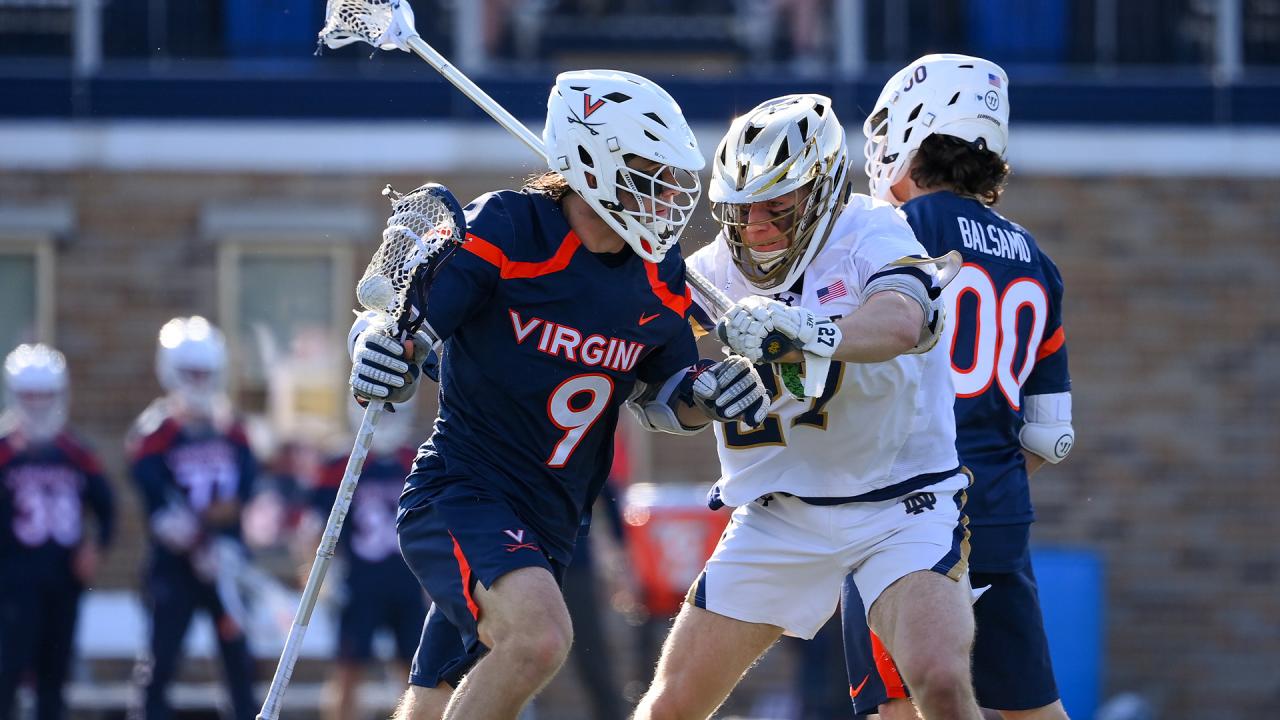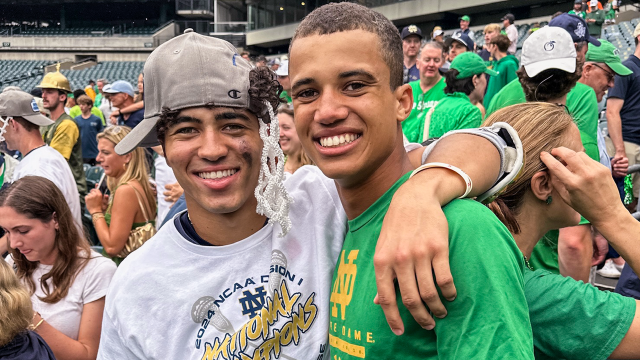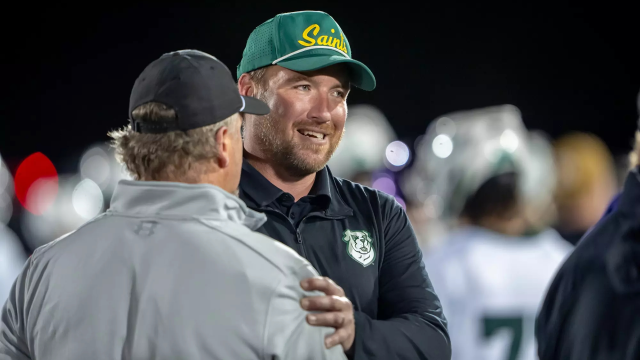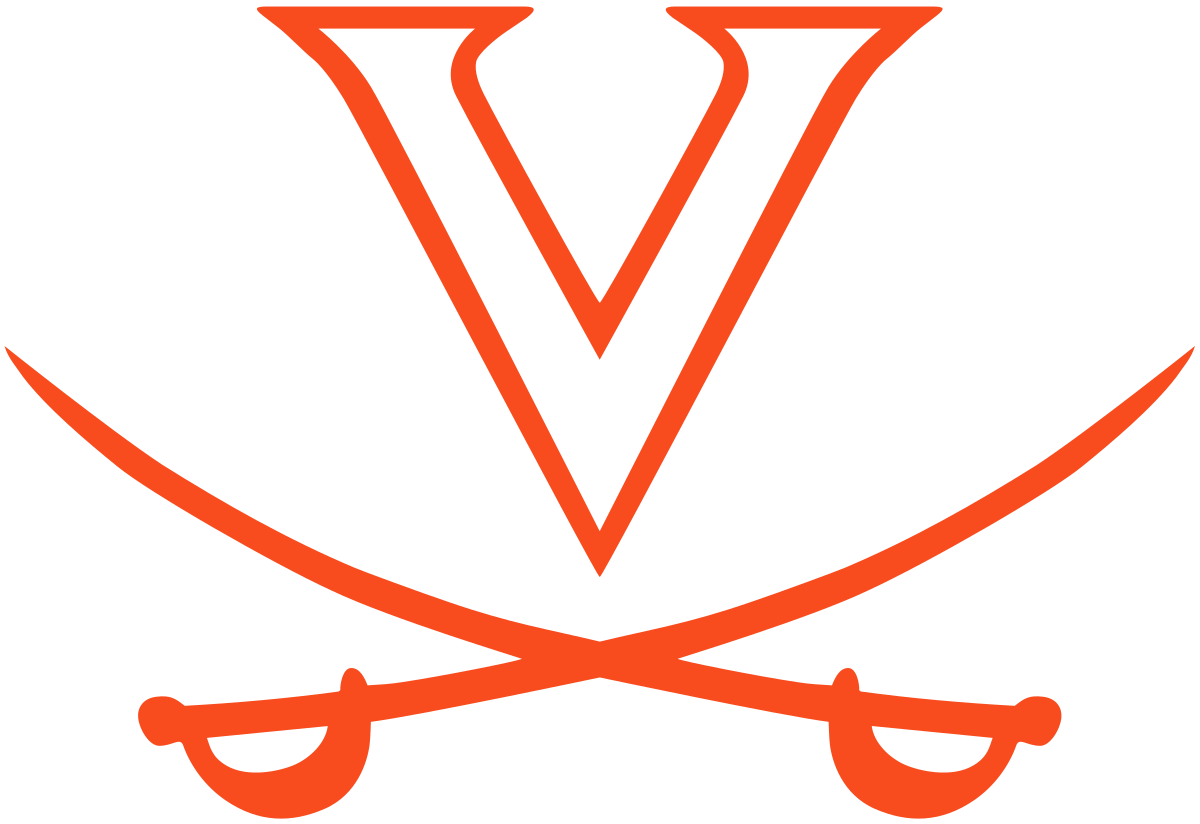
Lars Tiffany Can Look to 2021 for How to Configure a Deep Attacking Unit
Lars Tiffany found himself wondering this fall if one of the answers for Virginia in 2026 might just lie in 2021.
It's not a bad place to look for a team coming off a sometimes mystifying 6-8 season. The 2021 Cavaliers were the program’s most recent national champion, yet they also juggled the talent and personalities of an attack unit that had more plausible starters than spots on the field.
“In 2021, [we had] Matt Moore, Connor Shellenberger is a freshman, Payton Cormier, Ian Laviano,” Tiffany recalled. “It’s like, ‘OK, who’s not on attack?’”
It’s somewhat strange to think of the Cavaliers possessing a surplus of attackmen a year after they struggled mightily to score against high-end competition. They shot 26.7 percent as a team last season, their lowest mark since 2016. It was only the second time in Tiffany’s nine-year tenure Virginia didn’t crack 30 percent; the other was in the truncated 2020 season.
While there were many culprits in the Cavaliers’ tumble from back-to-back NCAA semifinal appearances to a 6-8 record, the offense’s inability to generate goals was the most prominent.
Yet the entire starting attack of Ryan Colsey, McCabe Millon and Truitt Sunderland returns, sophomore Ryan Duenkel is finally healthy and freshman Brendan Millon arrives with a considerable skillset that could immediately provide value.
Perhaps a hint of that was shown in Virginia’s scrimmage late last month against Georgetown, when McCabe Millon started at midfield and Brendan Millon got the nod on attack.
“All the sudden McCabe’s not starting on attack, so Ty Banks, this All-American defenseman, now guards Brendan,” Tiffany said. “It’s like, ‘Welcome to college lacrosse.’”
So, back to ’21 for a moment. About halfway through the season, Tiffany and then-offensive coordinator Sean Kirwan came up with a system that allowed all four to start. Shellenberger came out of the midfield initially, but he also saw time on attack during the first half. At the break, the Virginia staff decided what combination was working best.
Sometimes it was about the Cavaliers’ own cohesion. At others, it was about the best way to break down an opposing defense. Against a stout Notre Dame defense that wouldn’t give up much but might be vulnerable to some small windows, the sharpshooting Cormier and Laviano got the second half on attack and Shellenberger was used as a midfielder.
“As we looked at those different combinations, nobody was thrilled,” Tiffany said. “Nobody wanted to not start on attack or get pulled after the first quarter and go to midfield, but it was the best way we felt to keep nobody from getting really upset.”
While Tiffany isn’t interested in anointing starters, there are some pragmatic factors that might hint at what direction the Cavaliers go Feb. 8 when they open against Colgate.
Sunderland, who had a team-high 32 goals to go with 19 assists while shooting 41 percent last season, is a crafty operator around the crease as both a finisher and a feeder. His strengths just aren’t amplified as well out of the midfield (and Virginia has tinkered with him there in the past). He doesn’t seem likely to switch positions.
Then there’s Colsey, who had 29 goals and 11 assists last season and spent the summer playing box lacrosse in Canada and helping the Coquitlam Junior Adanacs win a second consecutive Minto Cup. Out of Virginia’s top five, he’s the only true lefty, and offenses usually run better with at least one of those on the field.
McCabe Millon drew far more scrutiny as a sophomore than he did playing alongside the graduated Cormier and Shellenberger in 2024. And while he still managed a 50-point season, it was a challenging spring as defensive coordinators zeroed in and helped limit him to 19.7 percent shooting.
“You’re going to have a tough matchup and we might slide to you, and we’re going to press out on you,” Tiffany said. “We’re going to disrupt you and we’re going to study you. You’re the one getting the most film room attention from the opposing defense. A basketball player has an off shooting night; he had a few of those, unfortunately. He’s really gone back to work. He’s really, really working to improve his shooting percentages, and we’re seeing it this fall.”
Duenkel hasn’t played the last two seasons — his senior year at St. John’s College High in Washington, D.C., and then in 2025 at Virginia — because of injury. Still, he was once the No. 1-ranked recruit in his class before winding up No. 3, according to Inside Lacrosse.
That checks the talent box. But what seems to excite Tiffany just as much is the intangibles he can deliver.
“He plays tough,” Tiffany said. “The only reason he’s a little hesitant is because he’s had three years where he hasn’t played college lacrosse or high school lacrosse, he was really hurt for most of those three years, so there’s a little bit of hesitancy. But some days he doesn’t hesitate and you go, ‘Whoa, he’s a madman out there.’”
Brendan Millon, meanwhile, has made an immediate impression during his first fall in Charlottesville.
“He’s got the vision,” Tiffany said. “He’s the guy when there’s extra man, when it’s really truly extra man or transition or some sort of advantage that came through subbing, that came through the early offense, he is uncanny with making the right feed and the right decision and very accurate with his stickwork, so we really like him being on the field a lot.”
How well Tiffany and his staff manage this unit could be what the Cavaliers’ spring hinges on. It worked five years ago, when Shellenberger was technically a starting midfielder much of the season but ended up as the most outstanding player in the NCAA tournament.
Regardless, it’s a situation Virginia isn’t hiding from as it looks to bounce back from a disjointed season.
“It’s vital we keep talking and being open about it and continue to understand it’s [about] what’s best for the team,” Tiffany said. “We don’t have all the answers yet as a coaching staff. It’s been wonderful to have those scrimmages against Michigan and Marist and Georgetown to see some different combinations and to see what worked, but three data points doesn’t solve all the questions. We’re going to keep experimenting and tweaking things.”
Patrick Stevens
Patrick Stevens has covered college sports for 25 years. His work also appears in The Washington Post, Blue Ribbon College Basketball Yearbook and other outlets. He's provided coverage of Division I men's lacrosse to USA Lacrosse Magazine since 2010.

Related Articles





